#ce: 19th century
Explore tagged Tumblr posts
Text
got asked what my favorite century is as a joke but now i'm going to be thinking about this for a while. i don't think it's the fifth century bce actually.
#surprisingly the 6th and 3rd centuries bce are strong contenders#1st and 19th centuries ce are always good ones#mine
21 notes
·
View notes
Text
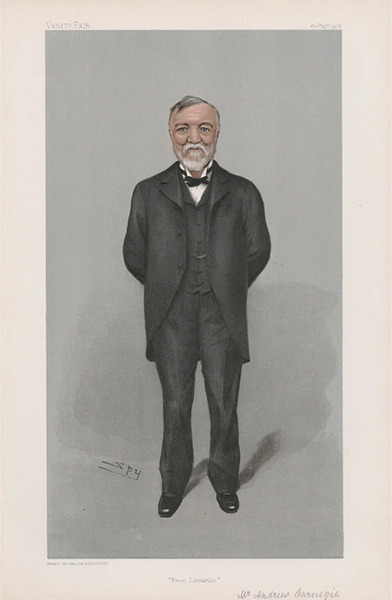
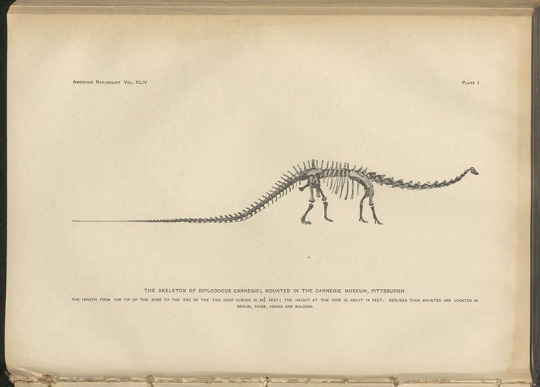

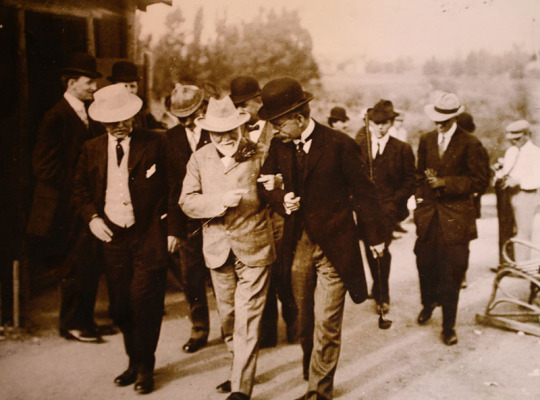


Andrew Carnegie – Scientist of the Day
Andrew Carnegie, a Scottish-American industrialist, died Aug. 11, 1919, at age 83.
read more...
#Andrew Carnegie#philanthropy#dinosaurs#telescopes#histsci#histSTM#19th ce nturyt#20th century#history of science#Ashworth#Scientist of the Day
13 notes
·
View notes
Text
not to be about opera again but to be about opera again. as an art form it has the reputation of being super stuffy and something for snobs who don't know how to have fun only but honestly this was one of, perhaps even THE main theatrical entertainment for centuries. i wish people knew how hard these things can go and how engaging they can be. like characters kill and die and fight wars and (almost) commit human sacrifice left and right. characters fall in love they mourn they're ecstatic they cry they're furious it's an extremely dramatic and emotional art form! and i understand that opera does not appear approachable bc of the general conventions of the art form but i promise old works can be fun and engaging if you go watch them with some preparation beforehand (reading the libretto helps) - not to mention not all operas are old bc there are so many modern operas which engage with topical events! also the music slaps.
#le triomphe de trajan (1807) out here calling for a man's execution with this banger:#point de grace pour ce perfide; que tout sons sang coule sur un autel#(no grace for this treacherous man; let all his blood flow on an altar)#this is also annoying to me when people write historical fic and the characters treat the opera as this elitist thing#that they don't know anything about.#you know when they go to the opera reluctantly and then they have no idea what's going on on stage or who the composer is.#which is. very unlikely for anyone with the money to attend an opera in certain opera houses in the 19th c. tbqh#like im more of an expert on paris and vienna idk what it was like in london#but if you were decently (upper) middle class or nobility (esp in paris) you went regularly. this was like a whole social space too#i recently read a fanfic and one of the characters was like 'oh it's in italian. i don't know that' and the other character went like#'it's by a man called donizetti what did you expect'#(this was situated in 19th century london)#like first of all. donizetti was NOT a librettist he was a composer he did not write the text#and second of all. he worked on french operas ?? so did rossini. and spontini.#opera was an incredibly international art form. also bc productions would be performed in different countries all the time#(sometimes changed and/or translated but not necessarily)#and again like i said. this was one of THE main forms of entertainment. people were familiar with its conventions! it was well-liked!#ofc bc of the seating prices it was not very accessible to lower classes most of the time#but lbr most characters that get written into an opera scene in fiction are at the very least decently bourgeois lol#i wish people knew how to properly historicise forms of entertainment whose reputation has changed in the modern era#from what it was a century or more ago#very adjacent to people 'cancelling' old lit bc of 'bad takes' like idk how to tell you this but people thought different back then#completely different world view from what we have today. that does not make lit from that era irredeemable it is just from a diff. time#acknowledging that and reading the text critically but also still enjoying it are things that go tgt here#ok rant over (it is never over)#curry rambles
14 notes
·
View notes
Text
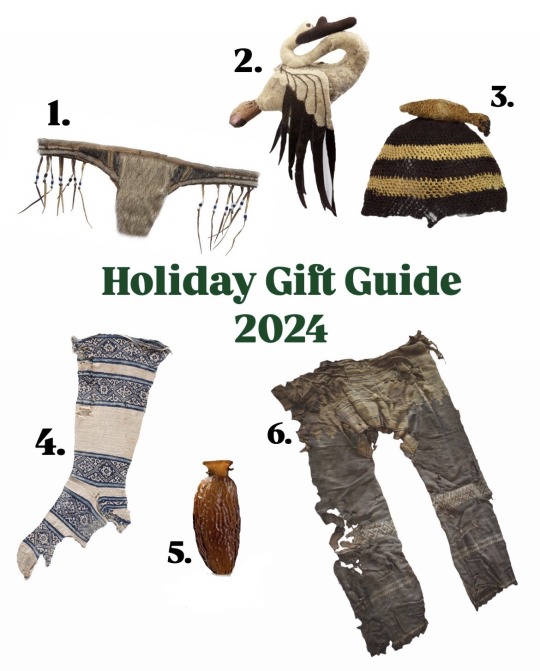
1. 19th century sealskin thong, Greenland
2. Pazyryk swan made of felted reindeer wool, circa 400 BCE, Siberia
3. Child’s hat with bird, nalbound cotton and wool, 1000–1476 CE, Chancay culture, Peru
4. Knitted cotton sock from Egypt, 1000-1200 CE
5. Sidonian flask shaped like a date, 1st-2nd century CE, Syria or Palestine
6. World’s oldest surviving pants, woven wool, circa 1300-1000 BCE, China
10K notes
·
View notes
Text
CE 1897: Footage of Jerusalem
youtube
View On WordPress
0 notes
Text
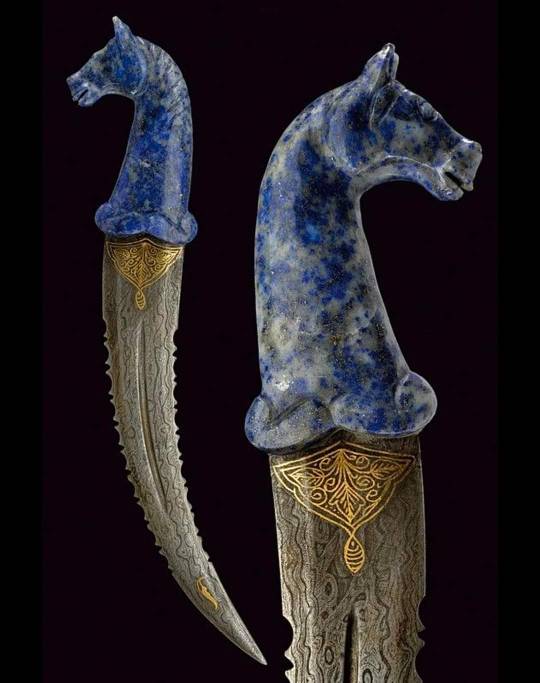
Horse Handle Lapis Lazuli Dagger khanjar,
Persian, 19th Century CE.
The Al-Sabah Collection, Kuwait
#art#history#design#style#archeology#antiquity#dagger#khanjar#horse#lapis lazuli#persia#19th century
4K notes
·
View notes
Text
𝐎𝐬𝐭𝐚𝐫𝐚
⠂⠄⠄⠂⠁⠁⠂⠄⠄⠂⠁⠁⠂⠄⠄⠂⠄⠄⠂��⠄⠄⠂⠁⠁⠂⠄⠄⠂⠁⠁
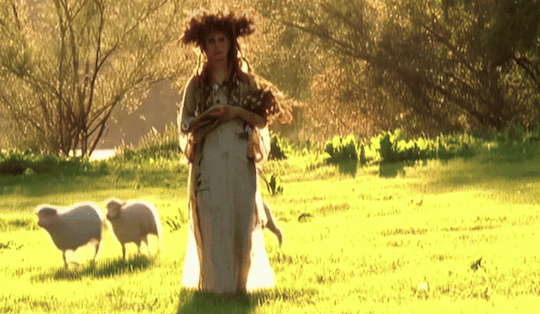
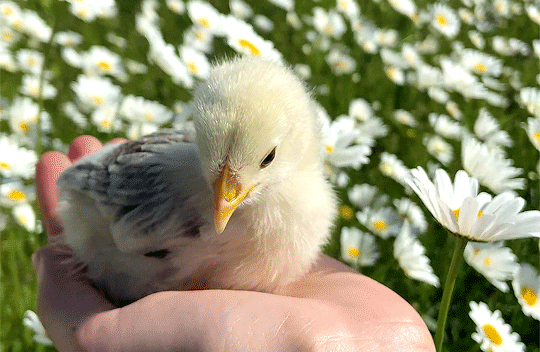
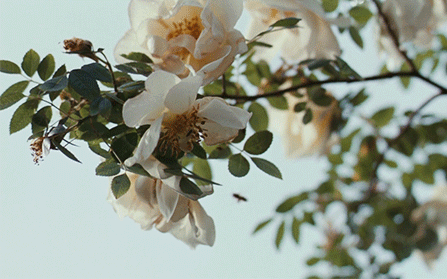
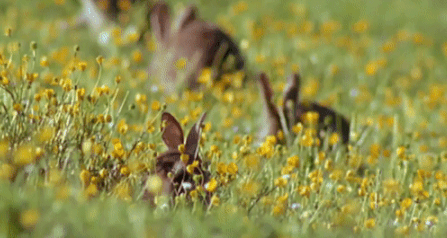
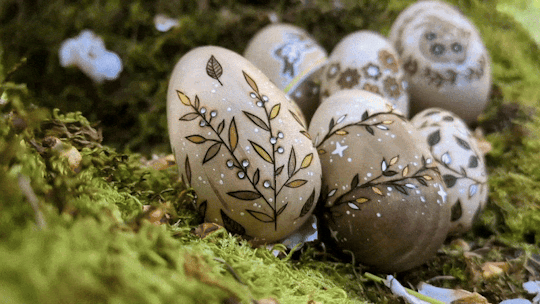

⠂⠄⠄⠂⠁⠁⠂⠄⠄⠂⠁⠁⠂⠄⠄⠂⠄⠄⠂⠂⠄⠄⠂⠁⠁⠂⠄⠄⠂⠁⠁
What is Ostara?
Ostara is a lesser sabbat that marks the official arrival of spring and takes place on the spring equinox, around March 20-21 in the Northern Hemisphere and September 20-23 in the Southern Hemisphere. It’s the moment when day and night are of equal length, symbolizing balance before the days begin to grow longer and light overcomes darkness. This is a time of renewal, fertility, and new beginnings, making it perfect for fresh starts and setting intentions for the season ahead.
⠂⠄⠄⠂⠁⠁⠂⠄⠄⠂⠁⠁⠂⠄⠄⠂⠄⠄⠂⠂⠄⠄⠂⠁⠁⠂⠄⠄⠂⠁⠁
The Legend of Ostara
According to a legend, Ostara is celebrated in honor of the Germanic goddess of the dawn and spring. The story goes that she once found a bird injured by the cold of winter. To save it, she transformed it into a hare, but the hare retained its ability to lay eggs. As a sign of gratitude, the hare painted and gifted eggs to the goddess, which is why eggs remain a central symbol of Ostara today. (1883, H. Krebs)
⠂⠄⠄⠂⠁⠁⠂⠄⠄⠂⠁⠁⠂⠄⠄⠂⠄⠄⠂⠂⠄⠄⠂⠁⠁⠂⠄⠄⠂⠁⠁
Goddess Eostre
Eostre, also known as Ostara, is the Germanic goddess of spring, fertility, and renewal. Her name is linked to the word "east" and the rising dawn, and some believe it means "Radiant Dawn." Eostre represents the spirit of spring and the return of fertility to the earth. Her arrival was traditionally celebrated with flowers, singing, bell ringing, and the lighting of new fires at dawn. She is often described as a beautiful young woman with flowers woven into her hair, accompanied by her consort and also her sacred animal, a hare. Sometimes he appears as a full-grown man, other times as a small rabbit cradled in her arms. Together, they bring eggs, a powerful symbol of the earth’s rebirth and fertility.
There isn’t much information about Eostre, but she is mentioned in the writings of an 8th-century monk, Venerable Bede. He recorded that the pagan Anglo-Saxons of medieval Northumbria held festivals in her honor during the month of April. Other than this, we don’t know much about how she was worshiped in ancient times. However, by the 19th century, she had become an important figure in German folklore, appearing in literature, paintings, and stories. She is often depicted as a youthful maiden adorned with flowers, symbolizing nature’s renewal after winter.
Some ancient festivals are said to have honored her with offerings of flowers, eggs, and feasts, welcoming the warmth and life she brings. Venerable Bede documented these traditions around the year 700 CE while traveling through Europe, recording pagan customs for the Catholic Church. The Church later attempted to shift the focus from Eostre to the resurrection of Jesus, but many ancient traditions remained deeply rooted. Eventually, instead of trying to erase them, the Church adapted and merged the two celebrations, renaming their spring festival “Easter” as a way to unite both traditions.
⠂⠄⠄⠂⠁⠁⠂⠄⠄⠂⠁⠁⠂⠄⠄⠂⠄⠄⠂⠂⠄⠄⠂⠁⠁⠂⠄⠄⠂⠁⠁
The Symbolism of The Painted Eggs
Eggs have long been a symbol of fertility, renewal, and the emergence of new life. Many cultures have used painted eggs in their spring festivals, from ancient Egyptians and Persians to European pagans. In the context of Ostara, eggs represent the potential for new beginnings and the fertility of the land as it awakens from winter. Decorating eggs is a tradition that has continued for centuries, carrying the magic of transformation and the blessings of abundance for the coming season.
⠂⠄⠄⠂⠁⠁⠂⠄⠄⠂⠁⠁⠂⠄⠄⠂⠄⠄⠂⠂⠄⠄⠂⠁⠁⠂⠄⠄⠂⠁⠁
Magic Correspondences
Planets: Mars
Season: Spring
Element: Air
Time of the Day: Dawn, Early Morning
Tarot: The High Priestess, The Emperor, Sevend of Wands, Justice
Colors: All pastel colors, yellow, green, pink, blue, brown
Herbs: Sorrel, Mint, Rosemary, Ginger, Irish Moss, Tansy, Woodruff, Wood Betony, Star Anise, Catnip
Fruits: Strawberries, Tangerine, Bananas, Lemon, Grapefruit, Apple, Orange, Mulberries, Kiwi
Vegetables: Artichokes, Asparagus, Carrots, Spring Onions, Garlic, Wild Nettles, Mushrooms
Crystals: Aquamarine, Jasper, Amethyst, Rose Quartz, Green Aventurine, Moonstone. Amazonite
Runes: Teiwaz, Ehwaz, Berkana
Trees: Birch, Rowan, Dogwood, Ash, Alder
Godesses: Eostre, Freyja, Aphrodite, Isis, Hecate, Demeter, Gaia, Athena, Astarte, Minerva, Cybele, The Morrigan
Gods: Mars, Ares, Apollo, Pan, Cernunnos, Tyr, Odin, Osiris, Dagda, Adonis
Dragon: Grael, Sairys
Flowers: Daffodil, Hyacinth, Daisy, Tulips, Clover, Crocus, Violet, Rose, Jasmine, Lilac, Honeysuckle
Animals: Hare, Rabbit, Chicks, Lamb, Butterfly, Robin, Bee, Snake. Deer, Wolf
Magical Powers: Balance, Renewal, Action, New Beginnings, Hope, New Possibilities, Fertility, Rebirth
Symbols: Rabbits, Eggs, Flowers, Bees, Birds and Nests, Butterflies, Flower Crowns, Seeds
⠂⠄⠄⠂⠁⠁⠂⠄⠄⠂⠁⠁⠂⠄⠄⠂⠄⠄⠂⠂⠄⠄⠂⠁⠁⠂⠄⠄⠂⠁⠁
Activities to do:
🐰 Decorate your space with Ostara symbols like eggs, bunnies, baby chicks etc.
🐣 Start planting seeds in your garden.
🐰 Buy or pick fresh flowers and place them in your home.
🐣 Paint some eggs. Use simple colors or add sigils, runes, symbols or anything you want to attract.
🐰 If you have a farm or a garden, it's the perfect time to buy and raise baby chicks! <3
🐣 Enjoy a festive meal to celebrate both Ostara and Spring Equinox.
🐰 Do some painting or other creative activities.
🐣 Do a deep spring cleaning, you rearrange your furniture for a fresh start.
🐰 Clean up your garden.
🐣 Leave seeds in your garden for birds.
🐰 Spend time in nature and look for the first signs of spring.
🐣 Make a list of goals to accomplish before spring ends.
🐰 Burn some incense to cleanse your space.
🐣 Make special Ostara candles with seasonal colors or herbs.
🐰 Do a tarot, rune, or pendulum reading in the morning of Ostara.
🐣 Try an Ostara guided meditation to connect with the celebration.
🐰 Honor Goddess Eostre with offerings or prayers.
🐣 Make an Ostara magickal jar
🐰 Wear clothing or jewelry in Ostara colors.
🐣 Try new recipes, especially with eggs and carrots.
🐰 Drink some tea and relax.
🐣 Read about Ostara and its traditions.
🐰 Make a flower crown for yourself or a loved one.
🐣 Try colorful makeup inspired by spring.
🐰 Dye eggs naturally or try flower prints on them.
🐣 Make friendship bracelets and share them with your loved ones.
🐰 Spend time with animals and connect with their energy.
🐣 Host an Ostara picnic or dinner with friends or family.
🐰 Plant your dream garden or buy new flower seeds.
🐣 Try aromatherapy with fresh scents (spring flowers).
🐰 Plan an egg hunt for fun with friends or family.
🐣 Connect with deities associated with Ostara and spring.
🐰 Worship your deities and honor Goddess Eostre.
🐣 Paint your nails in pastel colors.
🐰 Decorate your altar with Ostara symbols and colorful ribbons.
🐣 Try new activities, change routines, and care for yourself!
⠂⠄⠄⠂⠁⠁⠂⠄⠄⠂⠁⠁⠂⠄⠄⠂⠄⠄⠂⠂⠄⠄⠂⠁⠁⠂⠄⠄⠂⠁⠁
Food and Drinks:
Anything that has eggs! omelet, deviled eggs, stuffed eggs, carrot cake, braided bread, honey pastries, lamb, ham, fish, green vegetables, asparagus, goat cheese, sheep cheese, cow milk cheese, goat milk, sheep milk, cow milk, seasonal fruits, orange juice, tangerine juice, homemade carrot juice, dishes garnished with parsley, sweet egg tarts, muffins, carrot muffins, waffles, hot cross buns, herbal tea, mint, salads garnished with edible flowers, lemon, lemon bread, violet flower cake, lavender cake, brownies, preserves from last season, apples, yogurt, mozzarella, chocolate cake.
⠂⠄⠄⠂⠁⠁⠂⠄⠄⠂⠁⠁⠂⠄⠄⠂⠄⠄⠂⠂⠄⠄⠂⠁⠁⠂⠄⠄⠂⠁⠁
useful sources: Wicca: A Modern Guide To Witchcraft & Magick; Encyclopedia of Witchcraft: The Complete A-Z for the Entire Magical World by Judika Illes
gifs credit: Pinterest
tips♡🐇🌼
#ostara#spring equinox#spring#magic#magick#deity work#paganism#deity worship#hellenic polytheism#witch#witchblr#witchcraft#hellenic pagan#wicca#sabbath#eostre#easter#pagan witch#baby witch#pagan#paganblr#witchy#greek mythology#witches of tumblr#witchcore#witches#magic correspondences#pagans#witch community#tarot
891 notes
·
View notes
Text

Painted tile. Iran. 19th Century CE.
Wadsworth Atheneum Museum of Art.
#Wadsworth Atheneum museum of art#art#culture#history#middle eastern history#Iran#iranian#modern history#19th century#Persia#iranian history
253 notes
·
View notes
Text

Bronze statuette of Cybele on a cart drawn by lions, Roman, 2nd half of 2nd century CE. MET (ID: 97.22.24). The group represents the cult image of the goddess Cybele enthroned on a cart drawn by two lions. Spouts formerly projecting from the open mouths of the lions. The original cart, harness, and throne no longer survive. The rear left wheel is a 19th century restoration. (MET)
#roman#roman history#roman empire#roman religion#anatolia#ancient anatolia#greek#greek art#greek religion#ancient art#ancient religion#ancient greece#archeology#ancient archeology
271 notes
·
View notes
Photo

Ancient Celtic Sculpture
The sculpture of the ancient Celts between 700 BCE and 400 CE is nothing if not varied as artists across Europe developed their own ideas and borrowed what interested them from neighbouring cultures. Early Celtic stone and wood sculptures focus on the human form, especially heads. Such works usually represent gods and heroic warrior figures but are often abstract with typical facial features being lentoid eyes, a bulbous nose, and swept-back hair. Animals, both real and imagined, were another favourite subject, especially in miniature form in metal to adorn all manner of objects such as cauldrons, chariots, helmet crests, and jugs. Vegetal designs and swirling complex lines added extra decoration to objects and became a feature that stayed with Celtic art as it developed through the medieval period. Celtic art, in general, has enjoyed a tremendous revival from the 19th century CE up to the present day and many of the motifs which are so quintessentially 'Celtic' have their origins in the artworks produced 2,000 years ago.
Themes
The ancient peoples who spoke the Celtic language occupied territories from Iberia to Bohemia through the 1st millennium BCE and several centuries into the 1st millennium CE. The Celts in any particular area of western and central Europe had no concept they were part of a wider culture with similar approaches to religion and culture. Then, like many other long-lasting cultures, the sculpture of the Celts evolved over time, receiving influences from the cultures in the Near East and the Greeks, Etruscans, Scythians, Thracians and Romans, and, of course, from other Celts. Any treatment of ancient Celtic art is obliged, therefore, to be a general one. A further difficulty is that the Celts left very few written records and so we have no commentaries from the creators themselves on what inspired their art, what their art was intended to represent, or how it was to be used. We must judge Celtic art largely by examining only the art objects themselves and the contexts in which they have been rediscovered.
Despite these problems of definition and study, there are certainly some common themes which are expressed in Celtic sculpture wherever pieces have been found. Further, Celtic art is not restricted to prestige items but is found everywhere from large figure sculptures in stone to the humblest of clothing pins; even such highly functional items as wine flagons and fire-dogs (used to roast meat on) were embellished with ornate heads of animals.
Three subjects stand out as being of particular interest to ancient Celtic sculptors: Gods, warriors, and animals. Sculptures are rarely life-size, but this may be because examples have simply not survived. In addition, it is the head which seems to have captured the Celtic imagination most of all. Heads were considered the containers of the soul and so were especially important in Celtic religion and warfare (where they were collected as trophies). It is not surprising, then, to see the head dominate Celtic sculpture. Human heads, and many of the animals in Celtic art, are typically stylized, they often have swept-back hair, a bulbous nose, and lentoid eyes. Over time, the Celtic love of heads in sculpture seems to have diminished and been replaced by other forms but they are, nevertheless, still seen in engraved areas of other objects where they are surrounded by a camouflage of foliage and linear motifs, often, too, rendered in a highly abstract manner but visible to the trained eye.
Continue reading...
241 notes
·
View notes
Text
my new history TA pet peeve is students referring to the 19th and 20th century as a single moment in time. they'll be like "in the 19th and 20th ce. people-" im so sorry. when??? in the when?????? u do realize, my child, that you are referring to the time between 1800 and 2000. in 1800 they didn't have electricity. in 2000 they have google. u cannot just be like "yeah all those people believed this" or "did this" or "wanted this" literally who are you talking about????? there is no accurate statement you can make about 200 years of human history. especially THAT 200 years. the most well documented 200 years of human history.
and don't even get me started on where.
they never tell me where anything is happening.
everything just exists in some vague room in the 19th/20th ce.
i am losing my marbles i tell you.
#this is so niche i realize#ive had a lot of redbull#and i have so many exams still to grade before the end of the day tomorrow#sighhhhhhhhs
180 notes
·
View notes
Text
Why I don't really like the 12th house. / observations
How I perceive the 12th house, my real life observations on it and why I don’t really like it

TW : mention of anx!ety, d€pressi0n, self-und0ing attempt, mental he@lth issu€s, pan!c att@cks
(Sorry in advance for the constant cens0r!ng, I don't want to run the risk of getting shadowbanned like it almost happened before)
In december and january of 2023/2024 I was having 12th house transits (Mars then Venus). This is what I wrote on my notes app about the negative experience I had :
I am currently having 12th house transits at the time (Mars then Venus) and I've been so much sleepier and prone to irrational, unexplainable stress. Like I wake up and I am still tired bruhh I hate it as a Mars Dom I usually instantly and really easily wake up in the morning so it's frustrating because I feel less productive and sloppier and daydreamy but in a bad way.

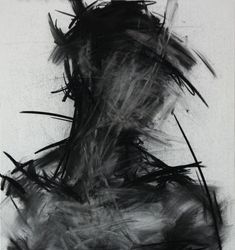
Why I don't really like the 12th house...
I genuinely don't understand the "hype" (if we can even use that word) around the 12th house. When I first got into astrology, I saw so many posts about it saying how magical it was, how special it is to have placements in this house, how it means that you have a higher purpose than others, how you are so sensitive, an empath...And I have to say, yes, of course, some of it is true. However, it is clearly a more romantisized description of the 12th house. This idea of a romantisized version of the house was then overtime validated by the fact that every single person that I've met with 12th house placements/stelliums were far from living this almost fantasy like description. In fact, these positive traits seem to be rarely easily expressed for people who haven't studied astrolgy to get to know themselves better and understand their purpose. The people that I know with these placements were mostly d€pressed, too nice, had anx!ety attacks, insomn!as , and sleepless nights. It is honestly such a lonely house. Having these placements in the capitalistic utilitarist world we live in is sadly more of a curse than a blessing...

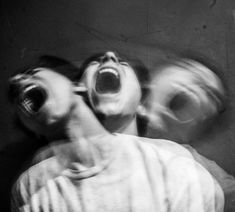
People I know with 12th house stelliums/ placements
• One of my friends has a 12th house stellium, her Sun in Taurus, Moon in Gemini and Mercury in Aries being there (the sign of the house is aries). She also has an Aries North node in the 12th house.
She always felt overstimulated and often told me that sometimes she didn't know if what she was thinking was really her own thoughts or other people's. She also had this obsession, or more so obsessive fear, with the idea of having to/ being forced to "sacrif!ce herself" for other people, for a job, for school,.. We often discussed this fear of hers and she would tell me this "why do people think we necesseraly have to suffer in life ? Why is struggle and suffering so normalised ? I don't want to sacrifice myself to achieve something, i don't want to purposefully inflect myself pain to live ? This is so weird to think that suffering is inevitable if you want to survive or live. That it's a normal part of life and that we should all be agreeing with it"
She is really empathetic and sweet but sometimes becomes all of a sudden defensive and passive-aggressive. She is also often anx!ous and as a result doesn't eat or sleep correctly.


Another one of my high school friends, less close, has a 12th house stellium in Aries (Sun, Moon, Mercury and Venus). He also has a North node in Aries in the 12th house.
Because I am/was not really as close with him as i am with the previous friend, i can moslty only share my impressions and assumptions from the interactions i had with him. I think it's interesting to say that his energy really stood out to me. He had sleepy eyes and a melancolic aura that reminded me of 19th century poets. If you know about Arthur Rimbaud, there's this one picture where he seems to look away. He basically looked like he was permanently captured by an old antique camera. His energy felt like what sepia looks like if that makes sense. He also had green or blue eyes (i don't exactly remember) that emphasazied the impression that he was mourning for something permanently. They were wondering, pensive almost sorrowful.
He was really gentle with people. His friends often said he was like a teddy bear, despite being almost 2meters tall. It's interesting to point out too that he was a gym bro. I think he would go to the gym probably 6 times a week sometimes, yet was so nice and calm. He wasn't acting like a cringy alpha male, which is pretty surprising for a cis heterosexual gym bro man with an Aries Sun, stellium and North node.
I think part of it is the 12th house influence that toned down this energy a bit, and instead of being selfish like a regualr aries, he was more selfless. He was always respectful towards women and never shamed people. However, he had a lot of insecurities and felt kind of helpless regarding fixing certain problems in his life. He was sometimes a bit too passive, and wasn't too comfortable when met with conflicting energies or situations that required decisive reactions.

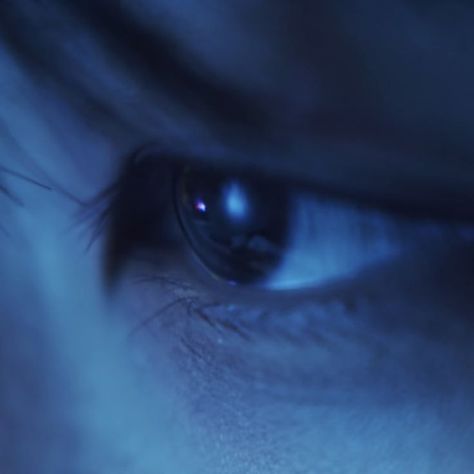
My sister has Lilith in the 12th house and her subconscious thought processes can become easily extremely s€lf destructive. She was diagnosed with severe depr€ssion and had to go to the mental h0spital once after doing a self-vndo!ng attempt. When her symptoms were still intense and she was still struggling a lot, she had to go to see a psychiatr!st and a therap!st on a weekly basis. It was a scary and crazy time. Until this day, she still has terrible sleeping patterns, many ins0mn!as, and often has pan!c att@cks. I distinctively remember one time it was so intense I thought she really was going to pass aw@y. She also used to have (and still a little) a huge victim complex, where she felt like she was condamned and doomed to live a miserable life, and that she is deeply misunderstood.


What drove me to come on here is a new student that I have met in college this year. We instantly clicked then she told me she was an Aquarius with an Aquarius rising and a Sagittarius moon. 3 of her personal planets fall in the 12th house, which means that, just like the two friends I have mentioned, she has a stellium. She then went on to explain to me how she was diagnosed with an anx!ety dis0rd€r. She said that she used to have, at some point, three pretty intense panic attacks on a daily basis. She told me that when she saw a therap!st for an appointment, the th€rap!st was shocked and said that it was probably one of the worst cases she has ever dealt with (update 21/10/24 : she actually didn't say that it was one of the worst cases of her career, she was just genuinely shocked at how my friend was able to survive living like this for such a long time).
This made me realize that there is definitely a theme with the 12th house surrounding chaotic sleeping patterns, restlessness, overthinking, numbness, emptiness, hightened anx!ety, melancolic tendancies, s€lf-sacrif¡ce and depr€ssi0n.


All of that to say that this house is somehow terrifying to me. I get the fascination for it. I just find it too eerie in a way. My chart, despite being a Sagittarius rising, is filled with fixed and cardinal signs. Pluto is prominent in my chart as it is thigtly conjunct my ascendant, so I don't behave and move through life like a stereotypical Sagittarius rising. On top of that, I have an 8th house stellium in Leo... I need to have control over things and situations, my ego is strong (i am working on it lol) and it is hard for me to surrender.
Therefore, the hyper mutable energy of the 12th house, its uncertainty and blurriness, gives me "anx!ety" and unsettles me. I never know what a 12th houser really thinks and neither do they themselves in a way. My fixed *ss finds that so stress inducing. I like when things are made direct and clear, but nothing about this house is direct nor clear.

#astro notes#astro observations#astrology#astro community#pick a card#pick a card reading#pick a picture#pick a pile
199 notes
·
View notes
Text
CE 1945: Footage of Palestine
March of Time — outtakes — Mosque; Arabs in Palestine, accessed at United States Holocaust Memorial Museum, courtesy of National Archives & Records Administration (https://collections.ushmm.org/search/catalog/irn1001122) Events shown Road junction with Syrian and Transjordanian borders. Buses, signpost “Jerusalem Trans Jordan South” and “Frontier Syria”. 06:32:45 Desert, cows, sea. People on…

View On WordPress
0 notes
Note
Hello, hoping you are well I would like to ask you for an order on how to write an arranged marriage or something like that.(If you already have something of this nature, you can ignore my request).
Writing Notes: Arranged Marriage
Arranged Marriage - a social practice where parents or relatives select a spouse for an individual.
It is commonly found in collectivist cultures such as those in India, Pakistan, Bangladesh, Iran, Sri Lanka, and China.
This practice is rooted in the belief that parents, who better understand their children's needs and complexities, are more suited to choose an appropriate partner.
Arranged marriages differ from love marriages, where partners choose each other based on mutual affection and prior relationship.
However, partners in arranged marriages frequently do fall in love.
Historically, arranged marriages have served various purposes, including: forming political alliances and maintaining familial lineage, a tradition that dates back to ancient civilizations such as Egypt and Rome.
While arranged marriages are often characterized by lower divorce rates compared to love marriages, they are not without criticism.
Concerns about forced marriages, especially involving young individuals, highlight significant human rights issues.
Proponents argue that arranged marriages can foster stability and compatibility based on shared values and social status, while
opponents emphasize the loss of personal agency in choosing a life partner.
Another disadvantage is the possibility that love will not grow between partners and the union will turn out to be disastrous.
A major advantage of arranged marriages is that they are usually built on a set of moral values and a similar belief system.
Arranged marriages produce a workable equality of educational, financial, and world outlook, even if gender equality is skewed.
Both partners tend to be of equal stature.
Some people argue that arranged marriages relieve a lot of pressure because a pre-selected husband or wife frees people from the constraints of dating and allows them to be themselves.
Despite these complexities, arranged marriages continue to be a prevalent and culturally significant practice in many societies today.
Background
Since ancient times, arranged marriages have been an important part of the cultural foundation in many countries, with people entering into such unions for political, social, and economic reasons.
In ancient Egypt, one of the goals of arranged marriage was to keep bloodlines pure.
Toward that end, many Egyptian kings and queens, such as Akhenaten, married their sisters and brothers.
King Tutankhamun himself married his half sister to preserve royal bloodlines, as did Cleopatra more than a thousand years later.
The Romans also practiced arranged marriage because daughters were considered currency that could be used to form strategic alliances and strengthen the family’s military and political positions.
The European monarchs used their royal princesses as the same kind of collateral well into the 19th century.
In many cases, parents arranged the marriages when their daughters were babies; often the marriages were performed when the princesses were still children, and they remained at home with their families until they reached a more suitable age.
Young princesses and noblewomen were frequently married to older men who lived in distant countries.
Queen Maria Theresa of Austria-Hungary arranged the marriage of her daughter Marie Antoinette, who traveled to France in May 1770, to marry the crown prince of France who later became King Louis XVI.
If a woman’s husband died, the husband’s family often remarried her to another useful man.
Arranged marriages have been part of India’s culture since the 4th century CE when they were used as a method of uniting and maintaining upper caste families.
Eventually, lower caste families adopted and used the system for the same purpose, and marriage was considered an alliance between two families instead of a union between two people.
In Marriage, the Family and Women in India, Rao Prakasa states that some of the benefits of arranged marriages include helping maintain social satisfaction in society, giving parents control of the family, preserving and continuing ancestral lineage, and facilitating the consolidation and extension of family property.
The practical considerations of arranged marriages in India differ between Hindus and Muslims.
Forced Marriage vs. Arranged Marriage
For adults who are getting married, arranged marriages and forced marriages are different.
Forced marriage is where one or both people do not agree or cannot consent to the marriage and pressure or abuse is used to force them to marry.
Arranged marriage is when the family choose the marriage partner. But the people can choose if they want to marry.
As a Literary Trope
"Arranged Marriage" Trope - The two spouses do not choose each other. Instead, others, usually their parents or guardians, make the selection and arrange the date and any other conditions that might apply, such as the dowry, for them.
The way an arranged marriage is treated by the plot depends on place and time.
For most of human history, arranged marriages were the norm because "marriage" was less about the union of two souls and more about the union of two families.
The rise of the "Marry for Love" ideal didn't really start in Western culture until the 16th century, and there are places on Earth where arranged marriages continue to be the norm.
Additionally, the "Marriage Before Romance" trope often goes hand-in-hand with arranged marriages.
While the priority firmly is the union of two families, that union is dependent on the stability and comfort of the two people getting married, so the two families do try their best to come up with a Perfectly Arranged Marriage.
The couple's happiness just isn't the main goal the way it is in cultures where marriage follows from love.
However, the one thing that is almost always present in an arranged marriage trope is tension.
Most people don't really want to marry a total stranger (much less have sex with them), and if that total stranger turns out to be a complete rogue and a cad, it may be necessary for the heroes to spring into action and rescue the hapless member of their group who is being forced to walk down the aisle.
Sometimes, the person in the arranged marriage takes matters into their own hands and becomes a Runaway Fiancé.
The "aggrieved" party may claim Breach of Promise of Marriage in response, as arranged marriages tend to be viewed as legally binding commitments by those who initiate it.
Alternately, there's a Love Triangle.
The character of the suitor is less likely to be important in those cases, but they generally won't look kindly on the outsider's interference.
It's worth noting that historically, an arranged marriage would not usually be to a complete stranger as far as most people were concerned.
Most marriages took place between families that knew each other well—perhaps as vassal and liege, business partners, or (for the vast majority of the people that weren't merchants or noblemen) simply neighbors and friends.
At least in the context of Europe, prospective spouses would have opportunities to interact socially and form an opinion of each other, and their feelings would naturally factor into their parents' thinking on the matter.
The modern stereotype did, however, often apply to the political marriages of the royalty and high nobility, where the spouses might not even speak the same language in extreme cases.
Conversely, an Arranged Marriage trope can be used to lock the hero and heroine together so that their disputes can not end with one of them washing their hands of the other.
A common tactic is for the child of a wealthy but common family to be matched with the child of an impoverished family with a title: Nobility Marries Money.
Families may even pledge infant children in marriage pacts that cannot be concluded until many years later.
Both in fiction and in Real Life, royal children (sons as well as daughters) were used as pawns in the political game cementing alliances and peace treaties with their marriages.
Examples
Anna Karenina plays with this trope. It, much like the Jane Austen books, was written during a period in which the wealthy were moving from arranged marriages to marriages by choice. It dedicates a chapter to the confusion this creates for Kitty's poor mother, as it's unfashionable to flat-out arrange a marriage, but it's lower class to allow her daughter to choose on her own. She has no idea what her role is, and while her situation is Played for Laughs (much like that of Pride and Prejudice's Mrs. Bennett), it's at least given some thought.
The clash between the old and new attitudes towards this trope is best shown in Mansfield Park: Maria Bertram's aunt arranges a marriage for her with the rich but ditzy Mr. Rushworth. Her father, although satisfied with the match himself, later offers to break it off in the engagement phase because he can see she doesn't love him; Maria chooses to go through with the loveless arranged marriage. The tragic irony is that Sir Thomas Bertram later (unsuccessfully) tries to convince the heroine, his niece Fanny Price, to marry a man she doesn't love.
Roman style is described by Pliny in one of his letters. He's been asked to look for a suitable husband for a friend's daughter and lists his candidate's qualifications in this order: family background; personal character; career prospects, appearance, and finally fortune which is probably placed last out of piety rather than its real importance. The physical description, interestingly, is clearly included for the girl's benefit.
Sources: 1 2 3 4 5 ⚜ More: Notes & References ⚜ Writing Resources PDFs
Hi, hope you're doing well yourself. Here are some references you can use. You can find more information and examples in the sources. All the best with your writing!
#arranged marriage#marriage#writing notes#writeblr#dark academia#writing reference#culture#literature#writers on tumblr#spilled ink#writing prompt#creative writing#light academia#writing ideas#history#tropes#writing inspiration#writing resources
88 notes
·
View notes
Text
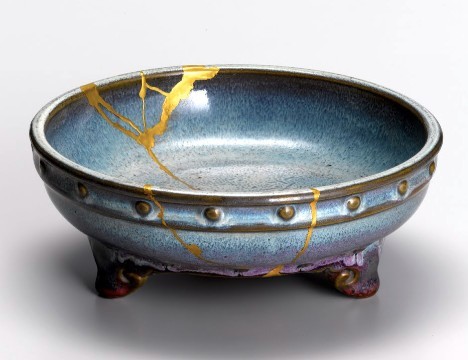
bowl in the form of a drum with three legs | c. 1115-1368 CE | china, jurchen jin or yuan dynasty
"The introduction of oxygen when firing copper oxide glazing created this noticeable transmutation in blue, purple, grey and red tones. Particularly remarkable aesthetically are the 19th century repairs of the ceramic with gold lacquer."
in the museum folkwang collection
54 notes
·
View notes
Text
Beetlejuice's Backstory and the Black Plague 💚🕷️🥀💀 PART 3

Good evening! As promised, here’s Part 3 of my series on Beetlejuice’s past and movieverse. Today, we dive deeper into historical fashion, analyzing the outfits of Beetlejuice and Delores to uncover their personal stories.
If you missed the earlier parts, check out PART 1 and PART 2.
Warning: This post contains SPOILERS for ‘Beetlejuice Beetlejuice’ (2024)... and many, MANY speculations.
Quick recap: In Part 1, we discussed the Plague. In Part 2, we delved into Beetlejuice’s past, questioning the claim that he died over 600 years ago.
I wondered: is that really true? Why does his clothing reflect the Baroque style, then?
That's right! In Part 3, I confirm my previous point: there are several clues suggesting that Beetlejuice most likely lived during the Baroque era - a cultural movement that began in Rome at the end of the 16th century and faded around 1750. Here is the list of the clues I noticed:
The lace neckband around BJ's neck.
His three-piece wedding suit.
Delores off-the-shoulder neckline and puffed sleeves.
The bird masks used by Delores and the undertakers.
AliveBeetlejuice first outfit (when he's stealing from corpses): specifically, the pirate shirt and the type of shoes.
Keep in mind that most of these elements were revolutionary novelties of the 16th-17th century. Here is proof for every. single. one of them.
The Lace Cravat

A behind the scenes still of Michael Keaton in 'Beetlejuice Beetlejuice' vs. the portrait of Jacob de Witte, Lord of Haamstede (Netherlands). The artwork was made by Jan Mijtens in 1660.
The first cravat, the predecessor of modern neckties and bow ties, originated in France during Louis XIV’s reign as a political and fashion statement. (Although the early idea comes from the Ancient Roman focale, used around 200 CE). The King was inspired by a particularly eye-catching necktie wore by Croatian mercenaries as part of their uniform. The new article of clothing quickly became a fashion staple for high-ranking men across Europe.
In its use, it represented the evolution of the common handkerchief, already popular in the 1500s as a practical tool, a flirty decoration, and a status symbol. I believe the variant Beetlejuice is wearing in the picture is called ‘jabot,’ and is one of the older, simpler versions.
Lace, often used in cravats, highlighted the wearer’s wealth. Italian lace, especially from Venice, was highly sought after by the European elite since the 15th century, when ruffs and collars were in vogue.
This detail suggests two possibilities:
Beetlejuice might have been an impoverished aristocrat (or a rich merchant) clinging to his title until the end. This could also explain the ring on his index finger, symbolizing power or family ties. Or both.

Alternatively, he may have been someone who strongly wished to be part of the elite.
Jacket and Breeches

Aristocratic fashion, 1630 (Victoria & Albert collection) vs. What Beetlejuice wore in the wedding scene.
Another standout innovation of the Baroque period was the introduction of the three-piece men’s suit, known as the ‘Habit à la française.’
This ensemble included a tailcoat (a calf-length jacket), a coat (a long waistcoat), and knee-length breeches. Like the cravat, this fashion was adopted across Europe. As you can see, Beetlejuice is perfectly embodying this fashion, which evolved and remained popular until the 19th century. Interestingly, one shoe is missing.
Pirate Shirt
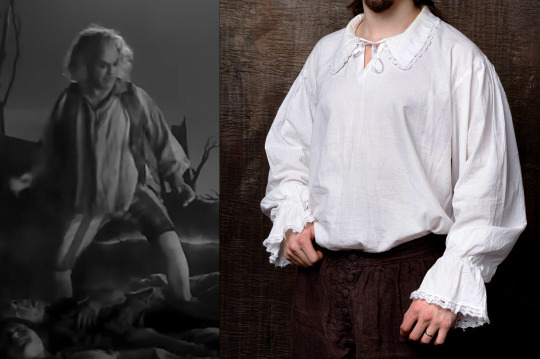
Originating in the 16th-17th century, the ‘poet shirt’ or ‘poet blouse’ remained popular through the Romantic era. These multi-purpose shirts served as both underwear and nightwear, featuring long tails that reached mid-thigh or knee. The body and sleeves were gathered at the collar and cuffs, creating a full, loose fit.
Delores' Outfit

For comparison, I’ve included an illustration of noblewomen’s fashion at the court of Louis XIII (died 1643). His successor, Louis XIV, made France a cultural and fashion beacon for the next two centuries.
In the movie, Delores wears two nearly identical outfits: long dresses with puffed sleeves ending just below the elbow, a corset, and an off-the-shoulder neckline. This style aligns with 17th-century trends when fashion became more comfortable and relaxed.
The black color suits her character’s personality and role in the film, possibly hinting at a connection to the late Renaissance and the Spanish Court.


In fact, during the reign of Charles V (1500-1558) and his son Philip II (1527-1598), Spanish aristocracy particularly favored the black color, as it represented austerity and power for both men and women. Additionally, a deep shade of black was particularly difficult to achieve with the dyeing methods of the time, making those fabrics quite expensive to make.
However, The Spanish style was quite the opposite to what France later proposed: it consisted in a severe and somber luxury, which increased in opulence as the time passed. As Spain happened to be the beacon of fashion before Louis XIV came along, it's only natural that black rapidly became quite popular all around Europe as well. The color was particularly appreciated by the members of the middle class in Protestant nations and, apparently, in Italy as well.
Finally, keep in mind that 'Delores' is a variant of the more common 'Dolores'. Both names have Spanish origins and means 'sorrows'.
So what do we think? Was Beetlejuice from a rich family? Was Delores a Spanish witch?
Who knows! But I’m willing to dream and speculate!
Until the big reveal from Tim Burton himself in the now teased but not confirmed yet sequel, have a fantastic week!✨
#beetlejuice movie#tim burton#michael keaton#film theory#film analysis#film stills#cinema#film#movie#beetlejuice#betelgeuse#beetlejuice sequel#beetlejuice beetlejuice#europe#italy#beetlebabes#italian#dark#plaguecore#baroque#17th century#history#renaissance#historical fashion#delores#beetlejuice 2024#black plague#beetlejuice 2#beetlejuice & lydia
77 notes
·
View notes